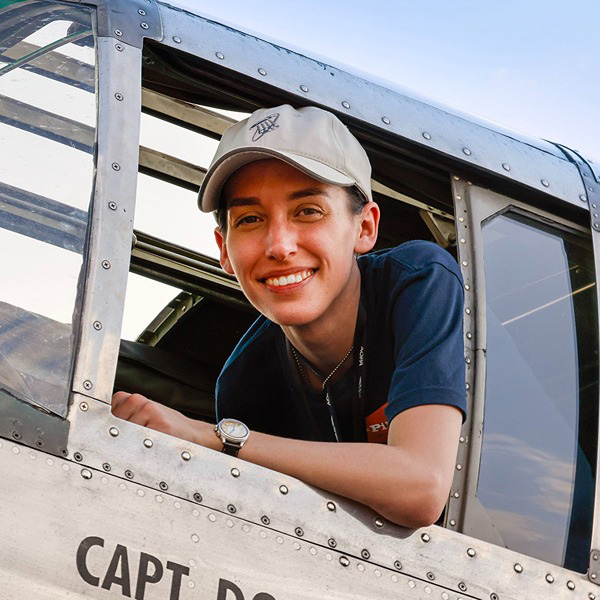Wind-driven generators
Electricity is in the air

Wind-driven electrical generators have the appearance of a little propeller or fan either attached to the outside of the aircraft or installed inside the fuselage or wing. These can either be used as an auxiliary power system to supply power to an aircraft that does not have an electrical system or to provide backup power for ones that do. In the event of loss of electrical power these generators can be deployed automatically or by the pilot to provide power for critical flight instruments or even hydraulics.
Called wind alternators or generators on general aviation aircraft, or ram air turbines (RAT) on larger airline or military aircraft, these generators work on the same concept as wind turbines. The propeller blades are connected to an electrical generator or alternator, and during flight the airflow causes the blades to spin and generate electricity. The faster the airplane is going, the faster the blades turn, and the more electricity will be produced. Conversely, when the aircraft is on the ground or flying below the speed threshold, electricity will not be generated.
Wind-driven generators come in a wide range of sizes and designs, from small fans for ultralights to the world’s largest RAT—found on the Airbus A380—which measures 64 inches in diameter. Some are used in conjunction with batteries to provide a backup emergency power source, while others used as a primary source of power for antique and homebuilt aircraft with or without an electrical system, powering radios, transponders, lights, or GPS systems. In early aircraft before electrical systems or batteries were used, wind-driven generators were installed on the outside of the aircraft, usually on the landing gear or wing, and used to power things such as radio equipment.

Ram air turbine
Many airline and military aircraft have these generators as backup to provide hydraulic and electrical power in the event of complete systems failure. It can be manually or automatically deployed from the cockpit but must be retracted by mechanics on the ground.

TurboAlternator
Basic Aircraft Products Inc. creates two models of ram air turbines that can be fitted to general aviation aircraft with supplemental type certificates. One model is a standby alternator that can be installed in the fuselage and deployed in the event of an electrical failure in flight, while the other is installed outside as a primary source of power.
Seppeler propeller
What looks like a humorously tiny propeller on the nose of this rocket-powered Messerschmitt 163 is really the wind-powered electrical generator.which had a system of counterweights and torsion springs to adjust for the very high speed of the aircraft.


